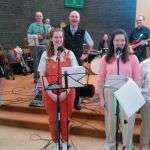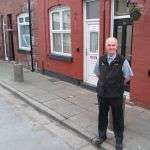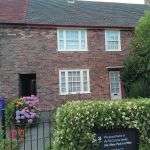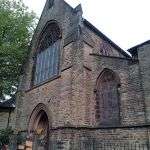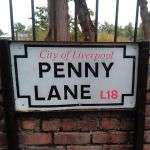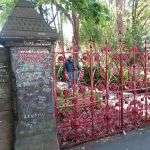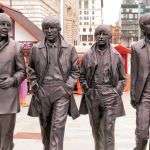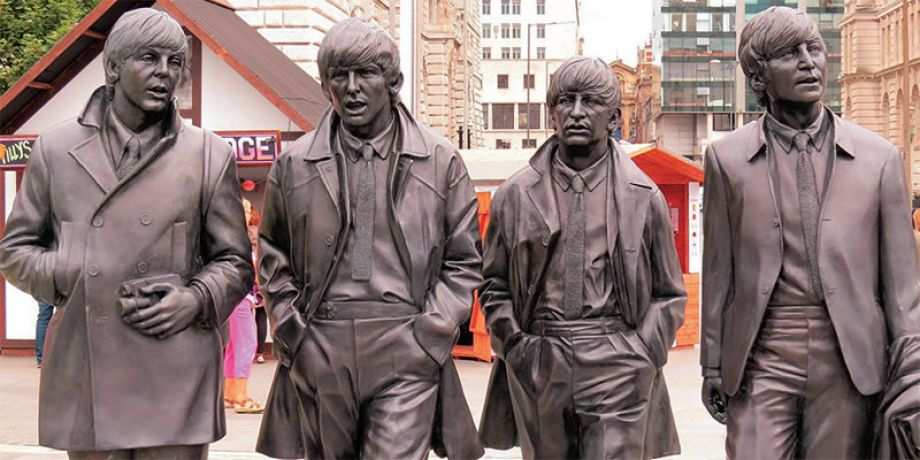
Columban supporters rarely become famous, but they just MIGHT know people who do.
I recently had the good fortune to deliver an appeal on behalf of the Columbans at “Christ the King and Our Lady” in the Liverpool neighborhood of Wavertree, a parish which has blessed us with many Columban benefactors. During the Second World War it was also the home parish of Harold and Louise Harrison. Harold worked as a ship’s steward on the transatlantic White Star Line, while Louise was an Irish shop assistant who loved to sing (to the point of “making the windows rattle,”) so legend has it).

On March 14, 1943, Harold and Louise went to church to baptize the last of their four children. They gave the name of their three-week-old baby boy as, “George.”
Young George Harrison would go on to be lead guitarist in the world’s greatest-ever rock group – The Beatles. In a long and illustrious musical career, both with The Beatles and as a solo artist, he’d compose such classics as “Norwegian Wood,” “Here Comes the Sun,” “Something,” and “While my Guitar Gently Weeps” before his untimely death from cancer in 2001 at the age of 58.
Robert Kidd works as parish administrator and his family knew the Harrisons. He took me on my very own “Magical Mystery Tour,” first to the church of “Our Lady of Good Help” where George’s baptism took place. The church building is now sadly disused, but the primary school next door still functions. This is where Robert’s Auntie Eileen studied alongside George’s sister, Louise.
Robert recalls how his aunt was never a great pop fan during the time of “Beatlemania,” whereas his Mum, Katherine, certainly was: “Probably one of those screaming girls,” he reflects.
Next, we went around the corner to the Harrisons’ former residence. No. 12, Arnold Grove is a small terraced house which in George’s day was a “two-up, two-down” affair with a single coal fire, an outside toilet and a tiny back yard where the family kept chickens.
In 1950 the household moved to the district of Speke. George attended the local primary school, where another pupil was a certain John Lennon. He then went on to study at the “Inny” — the Liverpool Institute — where he came across fellow music enthusiast Paul McCartney. By 1958 the three friends were in a group John had formed called The Quarrymen with George apparently having been auditioned on the top floor of a double-decker Liverpool bus. They changed to the “catchier” name of The Beatles two years later. When, in 1962, they acquired a new drummer, Richard (“Ringo Starr”) Starkey, and a new manager, Brian Epstein, the formula for global fame was well and truly established.
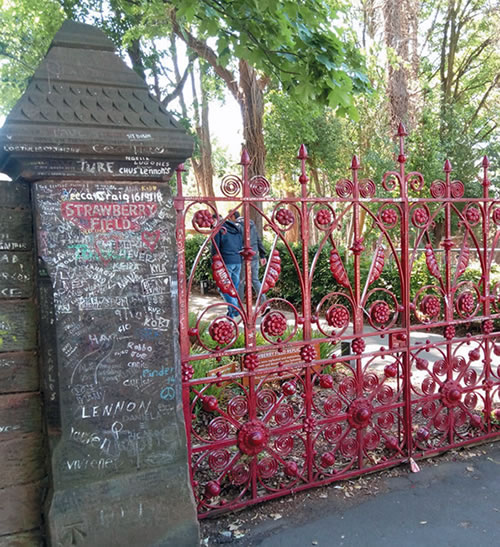
My own wanderings down Fab Four memory lane took me from the parish of Wavertree over the boundary to Allerton, an area bursting with Beatles connections. On Menlove Avenue I paused to observe the house John had lived in from 1945 to 1963 with his Aunt Mimi and Uncle George. On Forthlin Road I found the former McCartney family home, where many early songs had been composed, including “She Loves You” (Paul famously choosing “Yeah, Yeah, Yeah” as the chorus, overruling his Dad Jim’s suggestion of the more Anglicized “Yes, Yes, Yes”).
Between the two houses I passed the Salvation Army property of Strawberry Field, in whose grounds John used to play as a child. He immortalized the place in the 1967 hit “Strawberry Fields Forever,” which shared its disc with a tribute song to another Beatles landmark, “Penny Lane.” I hummed this tune as I travelled the length of Penny Lane, ending at the bus shelter where Paul used to change buses for the city center.
Inspired accordingly, I directed MY steps towards Liverpool city center. There, I paid my respects to the site of the Cavern Club, the image of Eleanor Rigby (sculptured by fellow rock ‘n’ roller Tommy Steele) and the Pier Head statues of the four men themselves. In front of the static foursome is an inscription assuring passers-by that Liverpool might be the city The Beatles moved on from, but in a sense never left.
Meanwhile, it was time for me to head back to the parish. I had one last Mass to celebrate. Robert apologized, saying they would have to change things about fairly quickly after Mass because the church was to be used for a musical presentation by “Tongues of Fire.” “What are they,” I asked, “a church choir?” “No,” came the reply, “a rock band.”
It was true. George Harrison may no longer be with us, but his tradition lives on.
Fr. John Boles is Regional Director of the Columban Missionaries in Britain.
